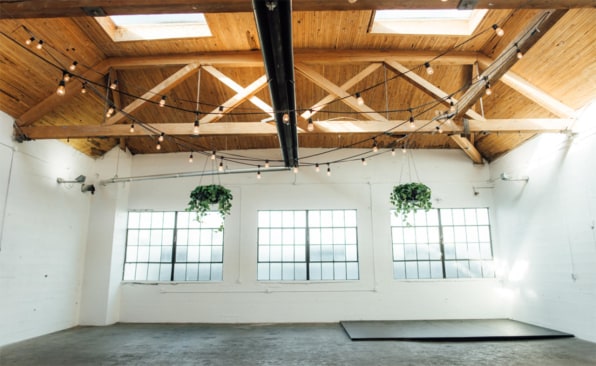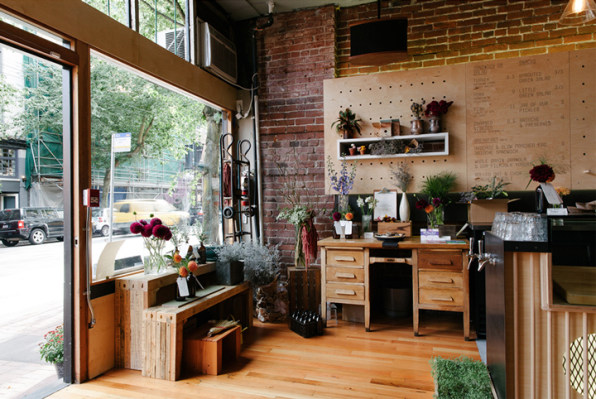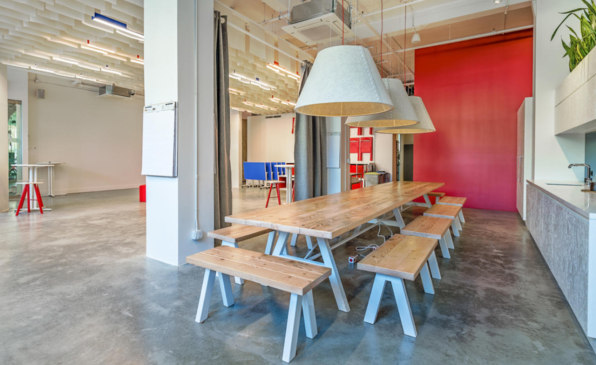The more time you spend devising goals, the less time you need to spend on solutions, says this is open space’s head of product Morgan Fraser.
Morgan Fraser is head of product for the retail startup thisopenspace. She spoke to Doreen Lorenzo for Designing Women, a series of interviews with brilliant women in the design industry.
Doreen Lorenzo: What was your journey to get to this position?
Morgan Fraser: I’d been working with startups for a while, and I was trying to figure out my next step. I also make pottery and textiles, and had heard about thisopenspace through getting involved with pop-ups and markets. What excited me about thisopenspace is it opened this door to a new wave of makers. The concept of pop-ups felt empowering, which allows people to test and try out selling their products without having to pay for a multi-year lease. A mutual acquaintance connected me with Yashar Nejati, the CEO of thisopenspace, and we quickly found ways I could elevate thisopenspace from a design and a product perspective. I was brought in as employee number one about three years ago, and the company has grown since then.

DL: What was your mission? What were you tasked to do? Where did you start?
MF: When I started at thisopenspace, the online marketplace to discover and book space was very manual. We were able to validate product-market fit by experimenting rapidly. I was brought on to bring the marketplace from the manual testing process to a scalable technology product–creating all of the UX design for the platform, product managing the process, and working closely with engineering.

DL: How did you discover the processes to get to what you have today?
MF: We get things out quickly and iterate on them based on data and talking to the people using our platform. We get a lot of user feedback, so part of my job is to figure out how to best move forward with that insight. With this mass amount of raw data, I have to determine how we can interpret it to help inform what features and improvements will have the most leverage.
DL: You have a small team. How do you mentor that team so that they can test out and try out new ideas?
MF: The best way to lead a team is to make sure that your team feels your support so you can give them the authority and autonomy to confidently take risks. It’s critical to nurture your team’s creativity to push beyond safe ideas. We advocate for radical candor and a spirit of debate. My goal as head of product is not for me to be right; it’s for us as a team to have the best decision moving forward.
DL: Talk about your design process.
MF: We get designers, engineers, and stakeholders across teams tackling the same problem. One of the main things in our design process is staying in the “problem space” for as long as possible. This includes looking to users and getting raw analytical feedback so that we don’t make assumptions. We’re always trying to validate that the problems we are focused on are essential and will move our mission forward. By doing this, we can formulate strong goals for our design projects. This creates something to look back to when you’re in the thick of a project, and you may be questioning why things are happening a certain way.

DL: How do you think being a woman plays into your leadership style?
MF: I’ve noticed a huge benefit in using soft power when approaching problems. I don’t need or necessarily want to be the loudest person in the room to persuade others of my ideas. A lot of my role is aligning design, technology, and business goals with other stakeholders, and I feel most effective when I’m using skills like empathy and emotional intelligence to understand where other people are coming from when they have different views. As a company, we’re all in this together; it’s not about me versus them. My goal is to get everyone emotionally connected to what we’re creating and build excitement from that.
DL: Where is design moving in your industry?
MF: Right now so much of user experience seems to exist only in the digital spectrum. I see it moving more into a physical realm. With so many daily interactions moving into the digital world, real-life, tangible experiences become that much more important. Related to that is the aspect of communities: How do you get a group of people with the same interests into a room together? There’s a huge potential for retail getting more involved with communities in physical space; no one wants an empty storefront.
–
This article first appeared in www.fastcompany.com
Seeking to build and grow your brand using the force of consumer insight, strategic foresight, creative disruption and technology prowess? Talk to us at +9714 3867728 or mail: info@groupisd.com or visit www.groupisd.com

